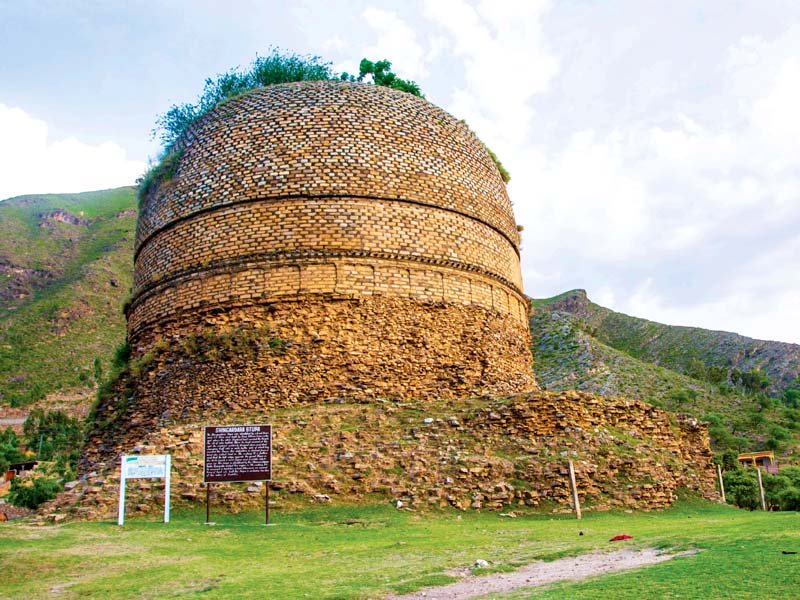By — Shyamal Sinha
The Archeology Department has started restoration work on the Buddhist stupa in Landi Kotal in Khyber Pakthunkhwa’s Khyber tribal district.
Lanḍī Kōtal is a town in the Khyber Pakhtunkhwa province of Pakistan, and the administrative capital of Khyber District. It was one of the largest towns in the former Federally Administered Tribal Areas, and is located 1,072 metres (3,517 ft) above sea level, on the route across the mountains to the city of Peshawar. Landi Kotal is at the western edge of the Khyber Pass that marks the entrance to the Nangarhar Province of Afghanistan, which is located just 5 kilometres (3 mi) to the west.
Landi Kotal is a tourist destination.Landi Kotal was the westernmost part of the Khyber held by the British during their rule of the Indian subcontinent.
The stupa is a historical archeological site located in Landi Kotal by the PakAfghan road which is severely damaged. Talking to The Express Tribune an official of the Archeology Department and project supervisor Ehsan Javed said that the financial resources for the preservation work had been provided by the World Bank. The restoration and preservation of the stupa is the first project in the first phase of preservation process in the newly merged districts.
“This stupa belongs to the initial stages of Buddhism in the Khyber Pass which is considered a gateway to the Indus delta. We have found a coin which dates back to the first century which means that it is at least 2000 years old,” said Ehsan Javed, adding the stupa is 65 percent destroyed as locals had made tunnels in it in search of treasure and it was vandalized by antique hunters too openly. He said that locals were being employed in digging and other physical work on the site.
“Khyber Pass has its own importance in the history of the Subcontinent. It was used by invaders and religions including Buddhism, Mughals, Romans and Muslims to reach India. There is only one large surviving stupa here which is locally called Shpola Stupa,” he said. “The preservation process was started in December 2020 but due to winters only 15 percent of excavation was conducted. These initial excavations confirmed that the stupa is a relic from the early stages of Buddhist incursions in these areas.
The 2nd century stupa may have been constructed towards the end of the Kushan Empire or according to some sources soon after third to fifth centuries. It is the most complete Buddhist monument in the Khyber Pass. It is a reminder of the great Kushana Empire and Buddhism nexus which is often depicted in Gandhara artefacts. Gandhara sculptures were excavated at this very stupa and are now housed in the museum in Peshawar.
Two sculptures in pieces and incomplete condition have been found,” he said, adding that the preservation process will take two years and a half to complete. “This would attract tourists to the militancy-stricken area as Shalpa Stupa is the only large stupa in the former Fata. There were several smaller ones which have been destroyed by the locals, including one at Ali Masjid,” he said.
Source — Tribune ,pak













